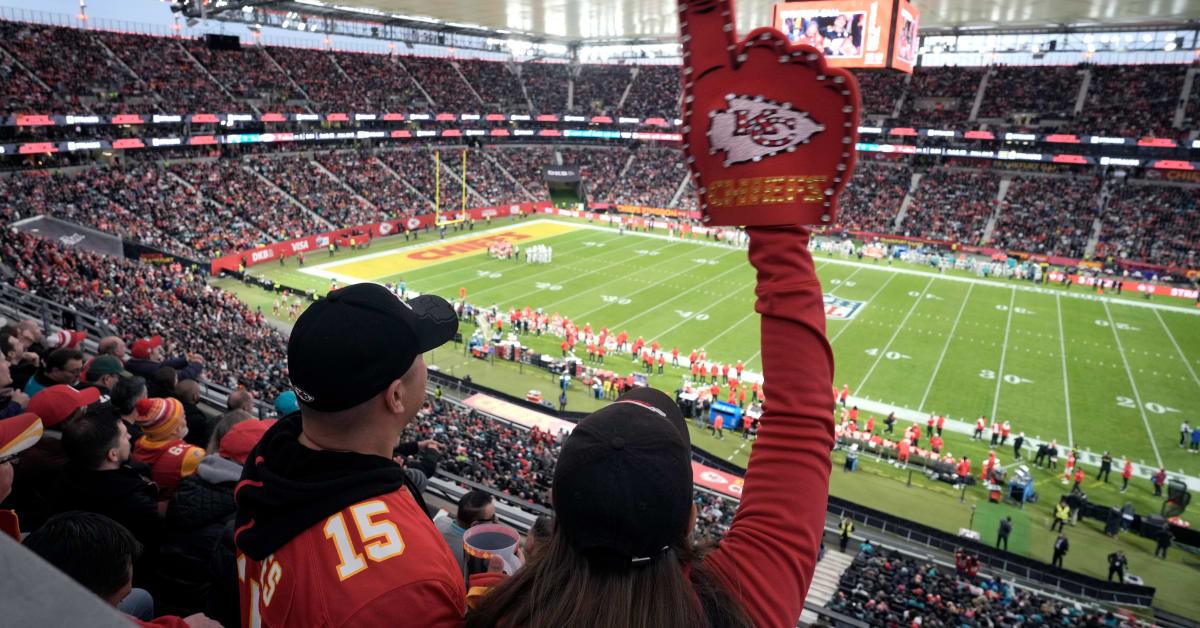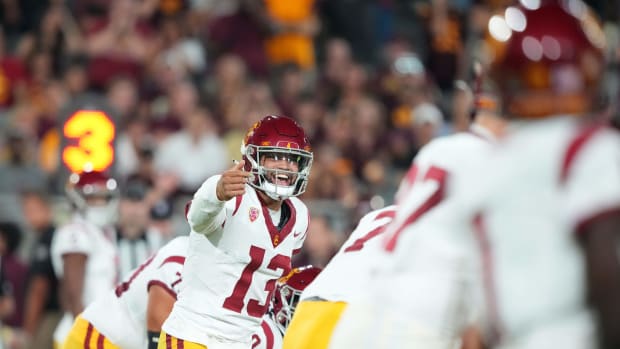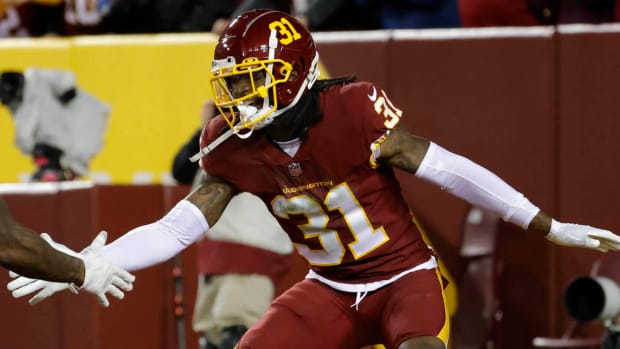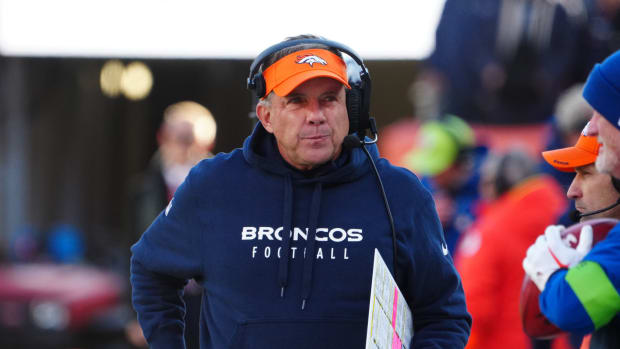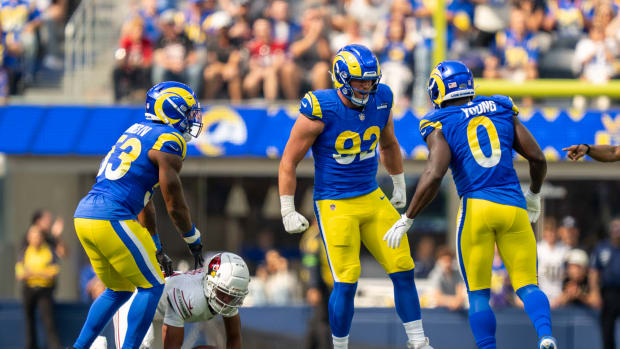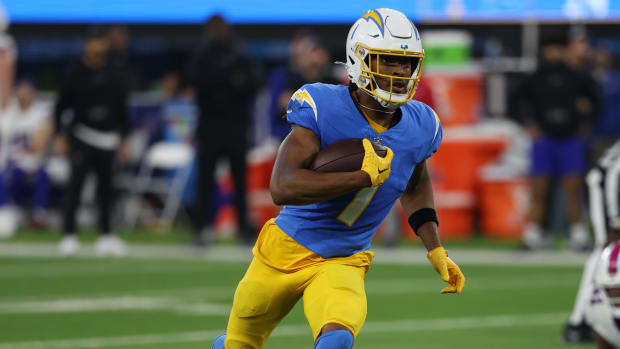The Future of the NFL Abroad Is Bright but Still a Work in Progress
Football (American) in Frankfurt
A couple of months ago, I received a call from Oliver Luck, the general manager of the Frankfurt Galaxy when I had the same role with the Barcelona Dragons, about a World League–NFL Europe reunion around the NFL game in Frankfurt between the Dolphins and Chiefs. I called my son, a music producer in Los Angeles with a shared zest for travel and experiences, and the weekend in Germany was on.
Despite my Barcelona experience, I had never been to an international NFL game. And due to my Barcelona experience, my expectations about a much deeper understanding of American football were easily met. I can now laugh about the frustrating obstacles in trying to sell American football in Spain decades ago. Here is just a sample of some of those obstacles.
- The goalposts being installed in the corners of the end zone
- Those end zones, which were seven yards deep
- I had to bribe Customs to get our equipment
- We never had enough food; players would eat and then go out and eat
- I put nightstands at the end of each bed so players’ feet would stay up
- Fans cheered at all the wrong times of the game
- Fans did the wave and the Olé song the entire game long
- Fan groups constantly told me to stop having so many “meetings” (they meant huddles)

Fans in Frankfurt had a massive appetite for Sunday’s Chiefs-Dolphins game.
AP Photo/Markus Schreiber
With these stories still fresh in my mind 30 years later, I saw in Frankfurt a completely different appetite for and sophistication about the game, albeit with several thousand American fans. It was, unlike my earlier experience, a true American football game, with cheering at the appropriate times and an appreciation of touchdowns, sacks and a tackle-fumble recovery-run for a touchdown that was the biggest play of the game. Having said that, I did notice some familiar things from my Barcelona days, albeit with a crowd of 50,000 compared to barely 15,000 or so fans we drew for a Dragons game.
First, there was the smoking. I notice this every time I go to Europe, and the Chiefs-Dolphins game was no exception. Smoking is just more common and without stigma wherever I have traveled in Europe, from restaurants to bars to games to enclosed smoking rooms at airports.
It also appears to me that American football, though vastly more accepted than it was years ago, is still a diversion for most of the crowd. With only one or two games a year per market, this makes sense and is apparent. The crowd is into the football, sure, but is as much or more into the atmosphere than it is to the game. When I was in Barcelona, we made the timeouts a party: blasting music, rolling out our dancers (Las Chicas Del Dragons), drum lines, frisbee dogs, flame eaters, etc. It was the same in Frankfurt on Sunday. The games on the video board (which was tiny by American standards), such as finding the football among spinning helmets, drew huge reactions, as did the Kiss Cam and Flex Cam. And there was full-throated singing of American tunes such as “Don’t Stop Believin’,” “Hey! Baby,” and “Take Me Home, Country Roads.”
The “home” Chiefs had a good majority of fans, with Kansas City jerseys red-dotting the stadium and their Tomahawk chop on full display. Chiefs fans were omnipresent, including a few falling down drunk in my hotel. My World League reunion was actually at the Chiefs’ hotel, and poor Donna Kelce was so mobbed that she was brought back to our event to hide from the throngs.
As for jerseys, beyond the Chiefs and Dolphins the most apparent was Packers (of course). And in terms of player jerseys—beyond the ubiquitous Mahomes and Kelce ones—the most popular ones were for two players no longer on those teams: Tom Brady’s Patriots jerseys and Aaron Rodgers’s Packers jerseys. Beyond that, there was quite an eclectic mix, including jerseys for a Buccaneers’ Rob Gronkowski, a Washington Alex Smith and a Packers’ Clay Matthews.
As one of the first employees of an NFL venture beyond our borders, I am asked often about the future of the league beyond the United States, and I thought about that a lot this weekend. While the NFL is far and away the most popular and prosperous American sports league, it has limitations globally. As I know so well, American football is not an easy sell to the uninitiated. Even watching the crowd in Frankfurt try to decipher some of the officials’ calls—illegal shift, illegal man downfield, lined up in the neutral zone, offsetting penalties, etc.—drew confused looks all around me.
Watch the NFL with Fubo. Start your free trial today.
Despite the novelty phase that we are in with the sport globally, I do think that international games—like the one I just saw—will continue to sell out easily. A one-off game virtually anywhere will draw enough interest and curiosity to fill a stadium for one or two games. But while there have been sporadic mentions of a team outside the United States—certainly the Jaguars, who play in London every chance they get, would be first in line to claim that venue—I don’t see it.
What I do see, however, is not an international team but an international schedule. It would consist of eight games per season, spread throughout London (3–4 games), Germany (2–3 games) and some combination of Spain/Brazil/Australia/Asia and other locales to come. Having eight games would allow for competitive balance, with the conference having nine home games instead of eight (the AFC this season, the NFC next season) participating that year. Every team would play internationally every other year. It would improve the present situation, where some teams are still forced to go kicking and screaming, while others—Jacksonville, Kansas City—routinely raise their hands to travel. This international schedule should and could happen within the next three to five years.
The NFL, which opened an office in Germany last week, as well, is nothing if not in constant and perpetual search of new revenue streams. Unlocking an international audience is perhaps the most powerful revenue stream still untapped.
Which brings me full circle to the goal of our World League experiment in 1991: trying to sell and promote American football around the globe. I will never forget that massive challenge 32 years ago; it seems like a much easier sell today. And based on my weekend in Frankfurt wading through drunken Chiefs fans, it is doing a lot better, albeit still a work in progress.

Williams was among the high-profile defensive linemen moved ahead of last week’s NFL trade deadline.
Vincent Carchietta/USA TODAY Sports
Trading expiring contracts of defensive linemen
In my days at the Packers, I would always tell anyone who would listen at the NFL offices that the trade deadline should be much later in the season to create the “buzz” that the NBA and MLB have with later deadlines. The response was always the same: The NFL did not want its teams acquiring rentals with a month left in the season. I’m still not sure I understand that logic. Having said that, I did find it interesting that three defensive linemen with expiring contracts were traded.
The Seahawks’ acquisition of Leonard Williams from the Giants was a rare NFL “Moneyball” trade, basically giving up money for the asset of a high draft pick. The Seahawks surrendered a second-round pick, but the Giants paid off all but Williams’s minimum salary, essentially giving Williams a $9 million parting gift. The trade establishes a price for a second-round pick: a half season of Williams and $9 million.
The 49ers acquired the expiring contract of Washington’s Chase Young in exchange for Titans general manager Ran Carthon. To explain: Carthon’s ascension to general manager came after years of being trained with San Francisco, triggering a Rooney Rule mechanism granting the team a compensatory draft pick at the end of the third round. That selection was traded for Young. Carthon and Young are now inextricably linked.
The most costly trade for a defensive lineman was the Bears’ acquisition of Washington’s Montez Sweat, the No. 37 selection currently in the 2024 draft. The Bears then, a couple of days later, signed Sweat to a $98 million extension, putting him in the top five highest-paid players at the NFL’s second highest-paid position. The Bears may have been working on this contract before the trade, but in my opinion, they could have saved millions, perhaps tens of millions, if they insisted to Washington and Sweat’s agent that a simultaneous contract extension be completed before sending a second-rounder to Washington. What is clear is that Sweat received a free-agent-like contract six months before free agency. But the Bears, with the lowest payroll in the league last year and one of the lowest this year, have to pay someone. It’s just odd they’re paying someone who hasn’t been in their locker room before this week.
Finally, the biggest sports trade during the NFL deadline was in the NBA, where James Harden was traded from the 76ers to the Clippers. Beyond the evaluation of how the two teams fared, the clear winner in this trade was Harden. In a span of a little more than three years, he has—through a combination of indifference and antagonism—managed to get himself dealt to three teams. Whenever there is talk of NFL player empowerment, we need to look only at Harden to realize that NFL stars are still at the children’s table compared to NBA stars. NFL players, even the biggest stars, do not have the leverage or temperament to take on management like this.
Whatever you think of Harden, he self-GMs his situation as well as anyone perhaps in the history of the business of sports.
































